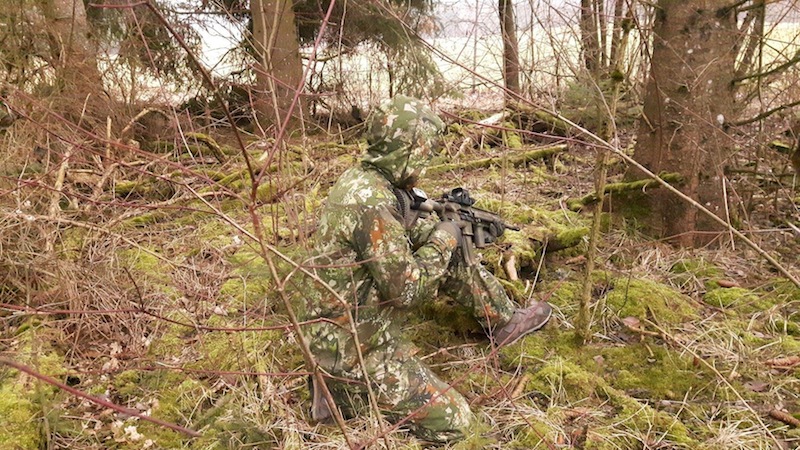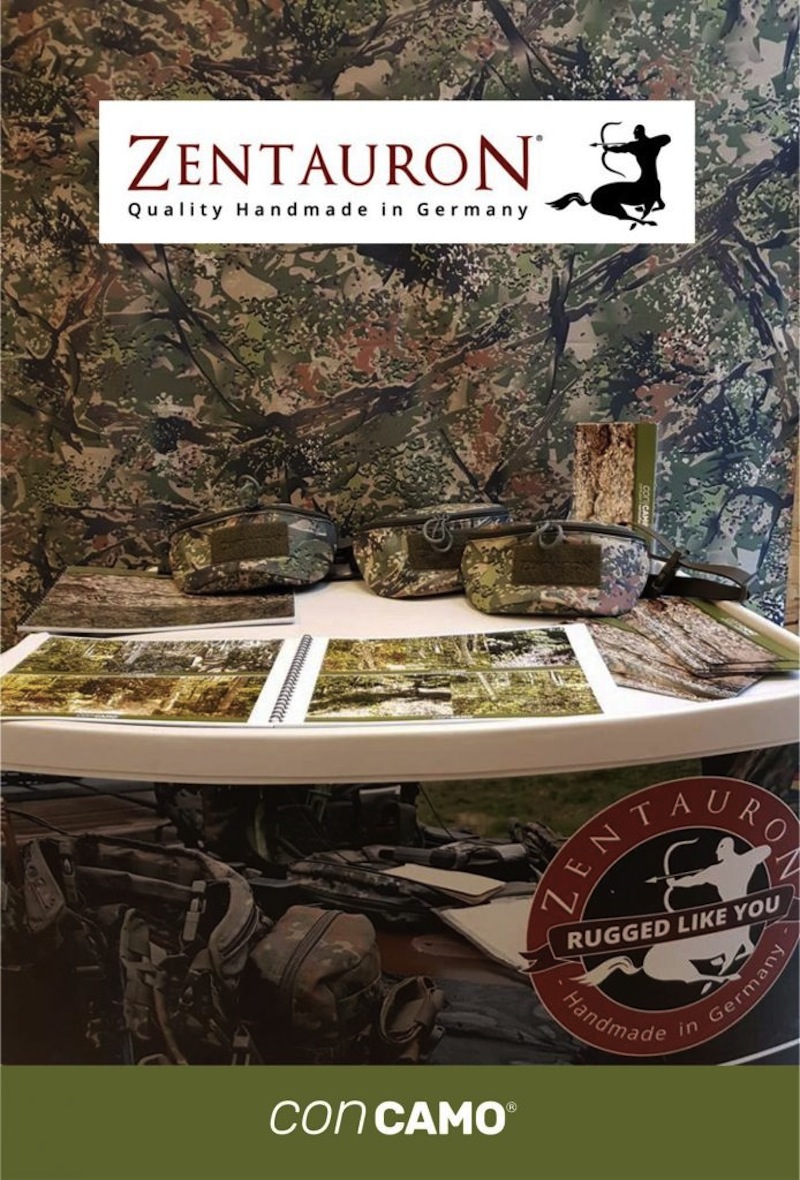Hol Dir den wöchentlichen SPARTANAT-Newsletter.
Dein Bonus: das gratis E-Book von SPARTANAT.
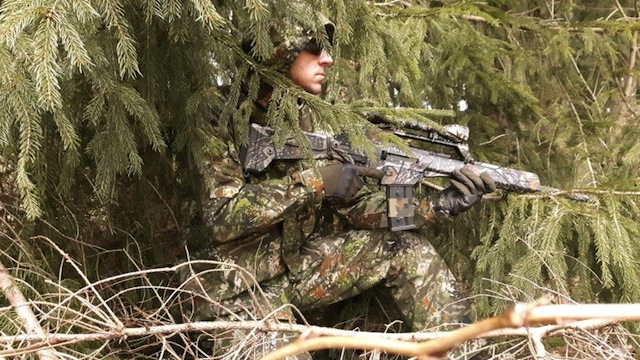
INTERVIEW: „ConCamo verwirrt die Sinne“
Bis vor mehr als hundert Jahren waren Soldaten der Feldheere eher farbig und pompös eingekleidet. Sie sollten von weitem erkennbar sein, die feindlichen Verbände beeindrucken und damit im Idealfall einschüchtern.
Bis vor mehr als hundert Jahren waren Soldaten der Feldheere eher farbig und pompös eingekleidet. Sie sollten von weitem erkennbar sein, die feindlichen Verbände beeindrucken und damit im Idealfall einschüchtern. Bereits die Kolonialkriege Ende des 19. Jahrhunderts zwangen über das Thema Tarnung nachzudenken. Die britische Armee führte Khaki ein, die deutsche kaiserliche Armee 1907 das Feldgrau. In den nachfolgenden Jahrzehnten gab es weltweit zahlreiche Versuche ein universales und damit perfektes Tarnmuster zu erschaffen. Die Ergebnisse waren manchmal innovativ und oft skurril und brachten so manche seltsame Uniform hervor.
Ein effektives Tarnmuster muss einen Soldaten auf drei Distanzen (bis 50, 100 und 300 Meter) mit seinem direkten Umfeld verschmelzen lassen. Erst oberhalb 300 Meter spielt das Uniform-Tarnmuster dann eine untergeordnete Rolle. Bei der Entwicklung von Tarnmustern müssen die vier Jahreszeiten (Herbst, Winter, Frühling, Sommer) und die wesentlichen Vegetations-Zonen (Waldland, aride Steppe/Grasland, Stein/Sand-Wüste, Gebirgs-/Hochgebirgsterrain) Beachtung finden. Tarnungen, welche speziell in urbanem Umfeld wirken sollen, werden für die Farbgestaltung zusätzlich noch in Dorf, Kleinstadt und moderne Großstadt unterteilt. Hier muss auch die Unterscheidung zwischen intakter Baustruktur und Trümmerlandschaft einfließen. Die klare Folge: eine universelle, also global einsetzbare Einheits-Tarnung kann es daher nicht geben.
Matthias Bürgin, CEO und Entwickler bei CONCAMO, hat sich gleichfalls dieses schwierigen Themas angenommen und in einer jahrelangen Entwicklungs- und Testreihe eine ungewöhnliche Tarnstruktur-Linie entworfen und zur Produktreife gebracht. Udo Lücken hat ihn für SPARTANAT interviewt:
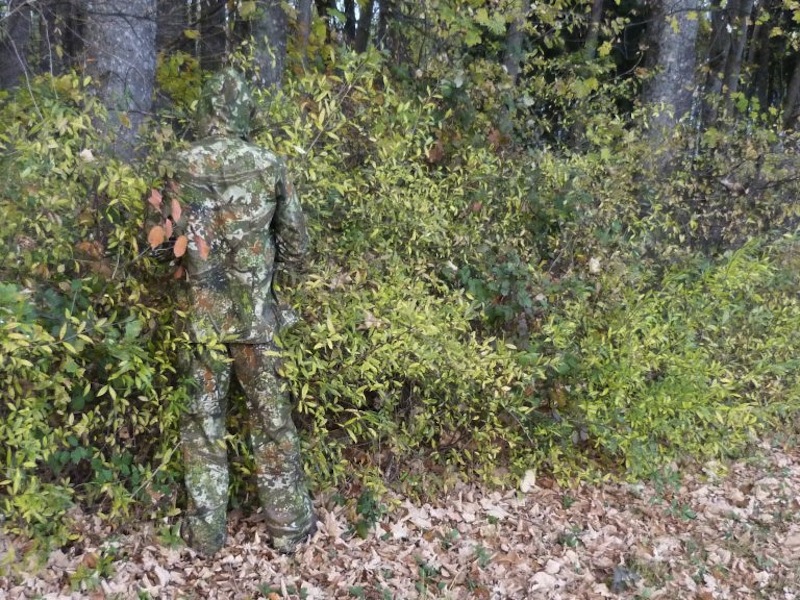 SPARTANAT: Welche Motivation hat Sie zum Thema Tarnung gebracht?
SPARTANAT: Welche Motivation hat Sie zum Thema Tarnung gebracht?
Matthias Bürgin: Bereits in jungen Jahren war ich von den Tarnmustern der Reptilien, Insekten und Säugetiere in meinem Umfeld begeistert. In meiner Modellbau-Phase als 10-jähriger war ich mit den vorgegebenen Tarnmustern meiner Modellpanzer nicht zufrieden und habe angefangen bessere zu entwerfen. Mit ca. 12 Jahren entwarf ich meinen ersten Ghillie-Anzug und war damit natürlich bei den Versteckspielen immer der König. In meiner Dienstzeit bei der Fallschirmjägertruppe der Bundeswehr konnte ich meine Erfahrung direkt anwenden und vertiefen. Nach meiner Dienstzeit bin ich insgesamt am Thema dran geblieben.
SPARTANAT: Was muss ein militärisches Tarnschema können?
Matthias Bürgin: Es muss das Unterbewusstsein täuschen und eine Illusion erzeugen.
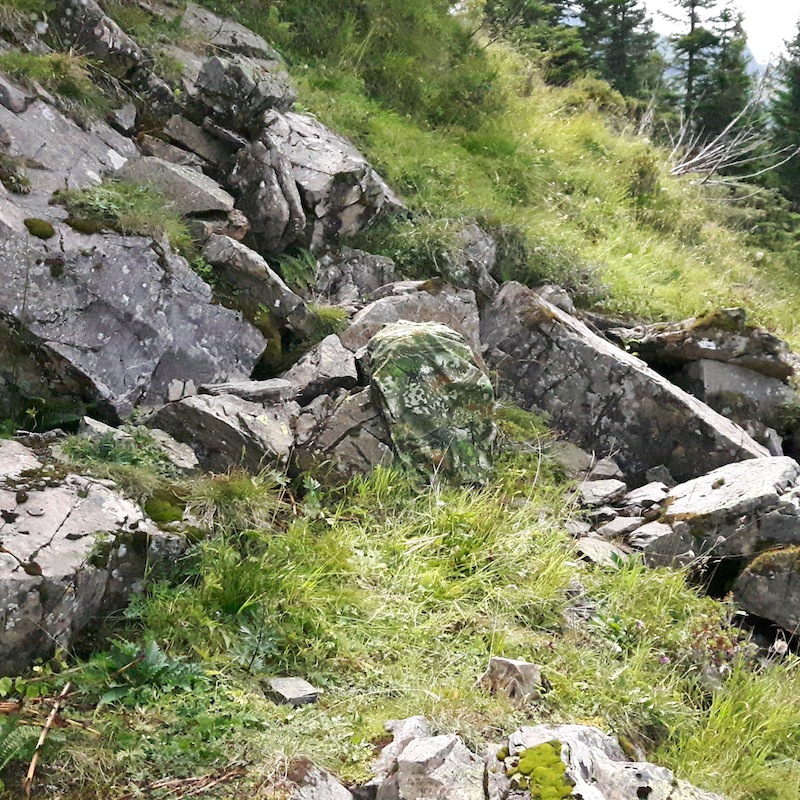 SPARTANAT: Was ist bei der Entwicklung eines Tarnmusters zu beachten?
SPARTANAT: Was ist bei der Entwicklung eines Tarnmusters zu beachten?
Matthias Bürgin: Die meisten vorherrschende Muster werden am PC entworfen und viele verwenden deshalb Pixel, da diese am PC einfach zu entwerfen sind. Andere zeichnen abstrakte Flecken und Verläufe in unterschiedlichen Farben. Diese Muster eint der Umstand, dass die Muster so in der Natur nicht vorkommen. Aus diesem Grund gibt es keine Tarnmuster die in der Entfernung 0 – 10m gut funktionieren und auf 200m die Kontur effektiv brechen.
„CONCAMO kommt aus der aus der Praxis für die Praxis. Es wurde in der Natur entworfen und erst später in den PC verfrachtet.“
CONCAMO wurde in der Natur entworfen und erst später in den PC verfrachtet (aus der Praxis für die Praxis). Die Grundformen von CONCAMO sind ausschließlich natürliche, die eben in der Entfernung 0 – 10m sehr gut funktionieren. Das Schöne daran ist, dass auch auf 200m die Kontur gebrochen wird.
 SPARTANAT: Wie unterscheiden sich Tarnmuster bei Tag und Nacht/Dämmerung?
SPARTANAT: Wie unterscheiden sich Tarnmuster bei Tag und Nacht/Dämmerung?
Matthias Bürgin: Ein gutes Tarnmuster ist zuerst einmal immer ein Kompromiss. Es muss bei Tag/Nacht und bei unterschiedlichen Hintergründen funktionieren. Es ist einfach ein Nachtmuster zu entwerfen, aber das ist taktisch nicht sinnvoll, denn was mache ich, wenn die Operation länger dauert und es hell wird?
SPARTANAT: Wie sind Sie an die Erstellung Ihrer CONCAMO-Tarnmuster herangegangen, und wie sind Sie letztlich auf Ihre neue Produktreihe gekommen?
Matthias Bürgin: Die heutigen Entwicklungen beginnen am PC und das sieht man den Mustern an. Meine Entwicklung beginnt in der Natur. Durch jahrelange Beobachtung und Auswertung habe ich die Natur in den PC gebracht. Die Natur diktiert das Muster und nicht der Mensch.
SPARTANAT: Welche Farbtöne und Strukturen sind besonders geeignet?
Matthias Bürgin: Die Farbtöne stehen in Abhängigkeit zum Einsatzgebiet. Doch ist eine der wichtigsten Farben rot-braun oder beige-rot. Diese Farben werden aber in den neuen Entwicklungen nicht verwendet. Wir bei CONCAMO nutzen Farben mit hohem Rotanteil.
„Es geht darum, eine Sekunde später entdeckt zu werden. Diese Zeit reicht aus, um zu agieren und in einer Konfrontation zu bestehen.“
SPARTANAT: Wie nimmt das menschliche Auge Tarnstrukturen war?
Matthias Bürgin: Das menschliche Auge nimmt keine Tarnstrukturen war, sondern erfasst alles und gibt diese Information an das Unterbewusstsein weiter. Das Unterbewusstsein muss nun die Informationen filtern und gibt vereinfacht gesagt nur Auffälligkeiten an das Bewusstsein weiter. Wenn man es erreicht, dass das Unterbewusstsein kein Signal oder dieses verzögert sendet ist das Ziel erreicht. Es geht ja nicht nur um den Punkt – nicht gesehen zu werden, sondern auch stark darum, dass der Gegner einen vielleicht 1 Sekunde später entdeckt. Diese Zeit reicht aus, um zu agieren und in einer Konfrontation zu bestehen.
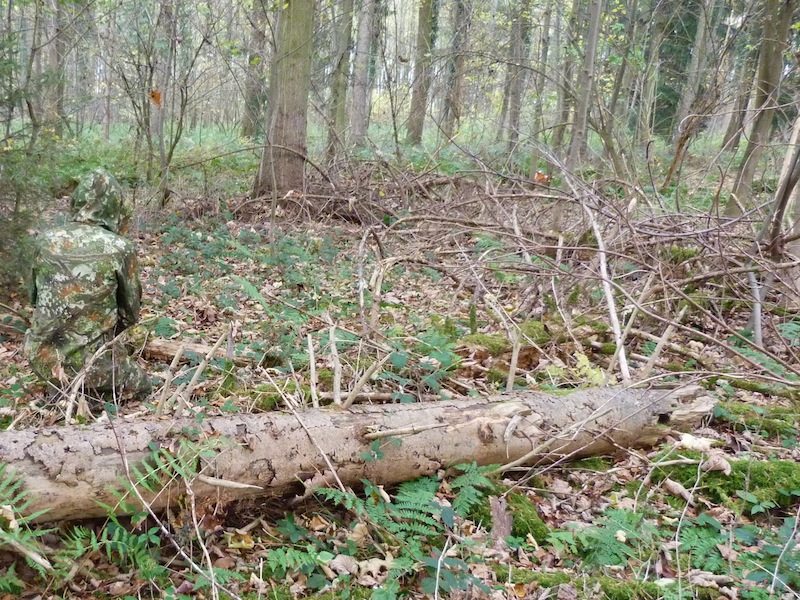 SPARTANAT: Gibt es bereits ein universelles Tarnmuster, bzw. kann es überhaupt eines geben?
SPARTANAT: Gibt es bereits ein universelles Tarnmuster, bzw. kann es überhaupt eines geben?
Matthias Bürgin: Die Eierlegendewollmilchsau gibt es natürlich auch hier nicht. Es ist schon schwer ein Muster zu entwerfen, das in Mitteleuropa in allen vier Jahreszeiten funktioniert. Wie gesagt: Tarnung ist eben immer auch ein Kompromiss.
SPARTANAT: Wie sehen Sie die Effizienz von Ghillie Suits gegenüber aufgedruckten Tarnmustern?
Matthias Bürgin: Ich liebe meine Ghillie-Anzüge. Der Ghillie ist ein Rennwagen und der Tarndruck ein praktischer Kombi. Der fransige Ghillie-Anzug ist eher für Spezialisten (Scharfschützen und Fernspäher), wohin gehend die allgemeine Tarndruck-Uniform für alle ist. Beide ergänzen sich und stehen daher nicht in Konkurrenz. Wenn ich einen Vergleich in der Natur mache und meinen Ghillie nicht der jeweiligen Stellung anpasse, dann ist CONCAMO besser.
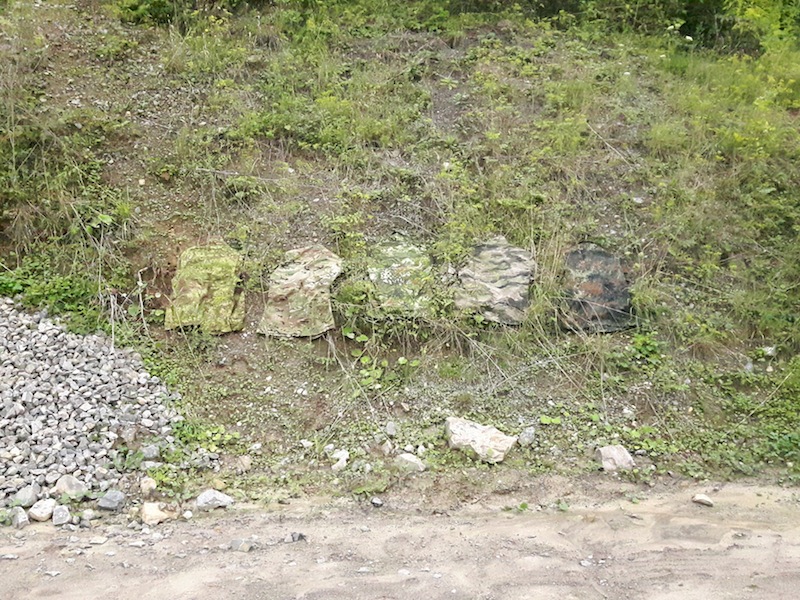 SPARTANAT: Wie beurteilen Sie die militärischen Tarn-Uniformen der zurückliegenden Jahrzehnte?
SPARTANAT: Wie beurteilen Sie die militärischen Tarn-Uniformen der zurückliegenden Jahrzehnte?
Matthias Bürgin: Die Blütezeit der Tarnmusterentwicklungen waren die 1940er Jahre. Viele heutige Muster basieren immer noch darauf. In den letzten 30 Jahren sind für mich folgende Muster wegweisend:
– Flecktarn (2D Muster) war einzigartig als es rauskam und das beste Muster der NATO. Betrachtet man die Flächengeometrie vieler neuer Nachfolge-Muster, erkennt man, dass Flecktarn Pate stand (auch bei vielen Pixelmustern).
– Multicam (2,5D Muster) brachte die Farbverläufe. Durch die hellbeigen und dunkelbraunen Punkte ergab es einen leichten 3D Effekt (2,5D).
– Realtree brachte 3D Muster, die perfekt passen, wenn der Hintergrund passt. Jagdlich OK taktisch eher schlecht.
– PenCott brachte viele Micro- und Makroelemente, hat aber schwächen in der Farbgebung, Kontur und im Einsatzspektrum.
SPARTANAT: Sind die Tarn-Schemata von CONCAMO auch auf Fahrzeuge übertragbar?
Matthias Bürgin: Damit begann ja ursprünglich meine Leidenschaft für Tarnmuster. Ja, wir haben auch Tarnmuster für Fahrzeuge im Programm. Diese gründen auf dem gleichen CONCAMO- Schema.
SPARTANAT: Wie werden sich die Tarnungen in den kommenden Jahren weiter verändern (müssen)?
Matthias Bürgin: Da die häufigste Aufklärung optronisch erfolgt, und viele Muster nur einen mangelhaften IR Schutz besitzen, wird der Schwerpunkt dieses Thema daher die nächsten Jahre prägen.
SPARTANAT: Wer sind Ihre Zielgruppen, gab es schon Gespräche und wie sehen zukünftige Projekte bei CONCAMO aus?
Matthias Bürgin: Da ich meine Entwicklungen durch die Brille eines Soldaten sehe, sind meine Entwicklungen in erster Linie für Soldaten und Spezialeinheiten. Die Reaktionen, besonders auf der Fach-Messe IWA, auf CONCAMO, haben mich sehr überrascht, da viele Türen aufgingen. Trotzdem muss man den Ball flach halten. Es kommt nicht darauf an mit welcher Sorgfalt oder wissenschaftlichen Theorie mein Muster entwickelt wurde oder wie die Bilder auf meiner Internetseite wirken, einzig und allein wird der eigene Test im Gelände darüber entscheiden wie gut CONCAMO wirklich ist.
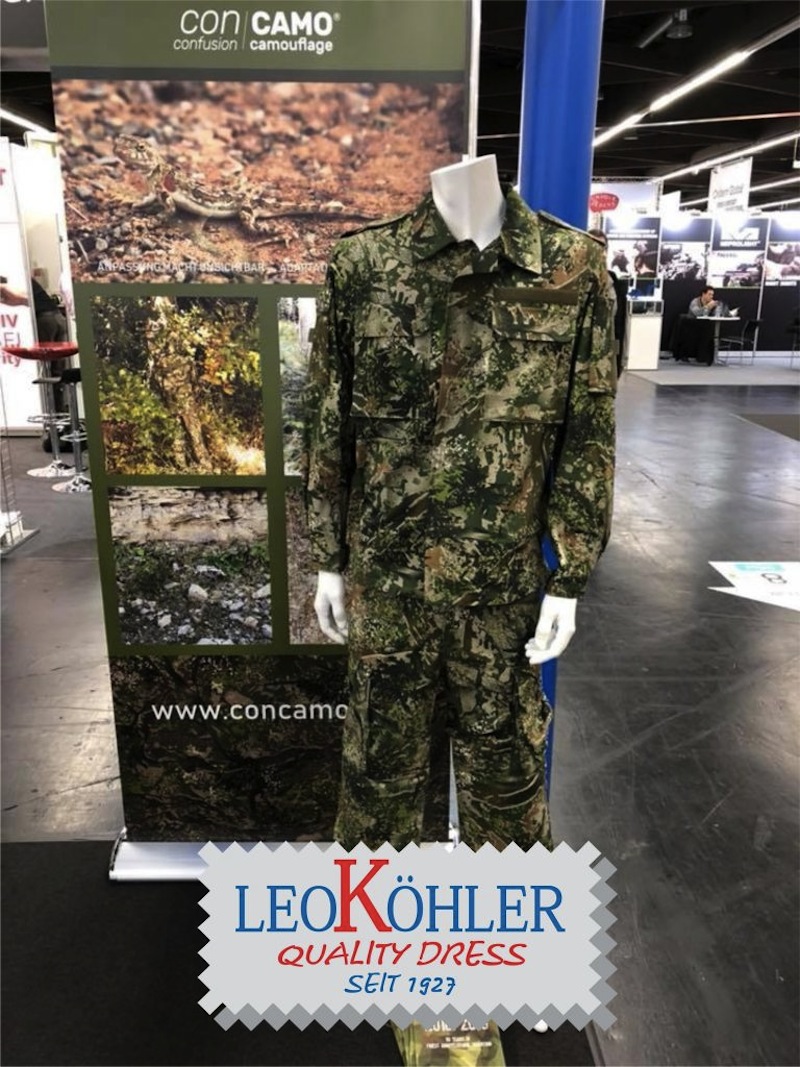 Auf der Messe IWA 2018 wurde das Tarnmuster CONCAMO green bereits auf dem Messestand von Leo Köhler präsentiert (oben im Aufmacher seht ihr ein Videointerview mit dem ASMC am Köhler-Stand bei der IWA 2018). Nur dadurch wurde CONCAMO schnell bekannt und dafür bin ich der Firma Leo Köhler dankbar.
Auf der Messe IWA 2018 wurde das Tarnmuster CONCAMO green bereits auf dem Messestand von Leo Köhler präsentiert (oben im Aufmacher seht ihr ein Videointerview mit dem ASMC am Köhler-Stand bei der IWA 2018). Nur dadurch wurde CONCAMO schnell bekannt und dafür bin ich der Firma Leo Köhler dankbar.
Weitere Hersteller sind auch schon am Ball wie ZENTAURON mit Gear und Sierra313 mit Boonies und Feldmützen.
Insgesamt habe ich sieben Muster für folgende Gebiete entwickelt: Wüste, semi arid/brown, green, zwei Wintermuster, Hochgebirge, urban. Ein Muster bringe ich nur, wenn ich überzeugt davon bin, dass es eine Schippe drauflegt. Denn niemand braucht ein neues zweit- oder drittbestes Tarnmuster.
Das Gespräch führte Udo Lücken
CONCAMO im Internet: www.concamo.com
Erste Bekleidung mit CONCAMO gibt es demnächst von Leo Köhler: www.leokoehler.com
Erstes Gear in Concamo kommt von ZENTAURON: www.zentauron.de
SPARTANAT ist das Online-Magazin für Military News, Tactical Life, Gear & Reviews.
Schickt uns eure News: [email protected]
Werbung
Hol Dir den wöchentlichen SPARTANAT-Newsletter.
Dein Bonus: das gratis E-Book von SPARTANAT.


